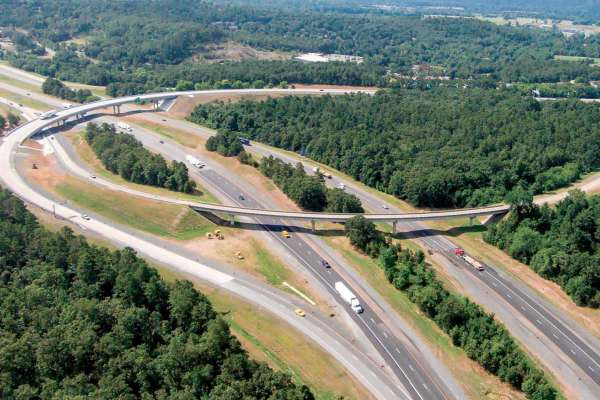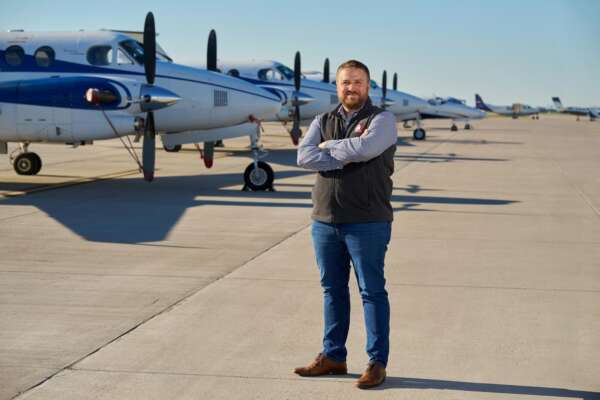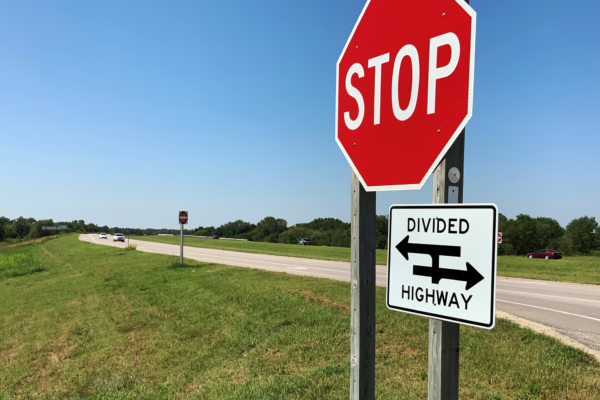The evolution of GIS in 9-1-1 and the increasingly critical role GIS professionals play in revolutionizing emergency services
Emergency response has always been fundamentally about location. The difference between life and death often comes down to minutes, and those minutes are frequently lost working out the answer to one simple question: "Where exactly are you?" This spatial challenge has evolved dramatically over my 25-year career, from the basic need to find rural properties to the complex task of locating someone on the 23rd floor of a high-rise apartment building during a medical emergency.
As someone who holds certifications as both an Emergency Number Professional (ENP) and a Geographic Information System Professional (GISP), I've had the unique privilege of seeing this evolution from both sides - understanding the operational pressures facing dispatchers and first responders as well as the technical possibilities that spatial technologies offer. This dual perspective has shown me that GIS isn't just a supporting technology for Next Generation 911 (NG9-1-1); it's the foundational backbone, which means that our work as GIS professionals, whether we’re ENPs or not, is central to the future of emergency response.
The Early Days: Converting Rural Routes to Enhanced 911
My early career was spent leading projects that today seem almost quaint in their simplicity, yet were revolutionary at the time. Converting counties from rural route addressing to Enhanced 911 addressing, which automatically gives 911 dispatchers the caller’s location, required creating authoritative address databases from scratch, ensuring every property had a precise geographic location that could guide emergency responders accurately.
These projects taught me the critical relationship between spatial accuracy and emergency response effectiveness. When we improved geocoding accuracy from the general area of a rural route to within meters of a specific address, response times decreased measurably. Property owners who had lived with directions like "the third house past the red barn on County Road 15" suddenly had addresses that dispatchers could locate instantly on digital maps.
But even these early successes revealed the limitations we would eventually need to overcome. Enhanced 911 worked well for single-family homes and small businesses, but what about the growing number of people living and working in multistory buildings? What about college campuses with dozens of buildings?
The Assessment Phase: Understanding the 911 IT Landscape
As my career progressed, I found myself conducting comprehensive 911 information technology needs assessments - deep dives into how emergency services were actually using (or trying to use) spatial technologies. These assessments revealed a consistent pattern: while the technology existed to provide precise location information, the spatial data infrastructure wasn't keeping pace with operational needs.
Dispatchers were working with emergency service zones (ESZs) that hadn't been updated in years. Address databases contained gaps and inaccuracies that forced them to rely on verbal descriptions from callers under stress. Most critically, the increasing number of emergency calls from large, complex buildings revealed that traditional addressing simply wasn't sufficient for modern emergency response.
These assessments also highlighted communication challenges that would become central to my current work. Emergency services professionals spoke one language, GIS technicians another, and IT specialists a third. Successful NG9-1-1 implementation requires bridging these communication gaps - a challenge as complex as the technical implementation itself.
Time and again, I’ve seen that the role of project communications manager has become as critical as any technical position on these implementations. It’s crucial that someone ensures that requirements are communicated clearly, that technical decisions are understood by all stakeholders, and that the final product actually meets the needs of the dispatchers and first responders who will use it.
As someone with a combined background in emergency services, spatial analysis, and project management, I've learned to serve as a translator between these different professional communities, helping ensure that technical capabilities align with operational requirements and that project deliverables serve the ultimate goal of improving emergency response.
The NENA Standards Revolution: Bringing Order to Chaos
The development of National Emergency Number Association (NENA) standards for NG9-1-1 marked a turning point in how we approach spatial data for emergency services. These standards didn't just provide technical specifications; they created a common language that all stakeholders could use to discuss requirements, expectations, and deliverables.
These standards have required GIS technicians to think beyond traditional mapping applications. GISPs creating spatial data for NG9-1-1 aren’t just making a map - they're building a system that will guide first responders in life-or-death situations. The margin for error is near zero, and the consequences of inaccuracy are measured in human lives.
The standards-driven approach has also highlighted the scalability challenges that define modern NG9-1-1 implementation. A methodology that works for a small rural county must also work for a major metropolitan area. Systems must accommodate everything from single-story buildings in small towns to complex urban environments with dozens of high-rises.
The Current Frontier: Indoor Location and 3D Spatial Data
Today, I'm leading what I believe represents the future of NG9-1-1 spatial services: using LiDAR scanning and building information modeling (BIM) to create comprehensive indoor addressing systems for critical infrastructure. This work brings together specialists from multiple disciplines - LiDAR experts, BIM professionals, GIS technicians, and emergency services professionals - all working toward a common goal of getting first responders to the exact location where they're needed.
The technical process itself would have seemed impossible when I started my career. We now use mobile LiDAR scanners to capture millions of points representing the interior geometry of buildings. These point clouds are converted from as-is scans to vector BIM and GIS data products and ultimately to raster files by GIS technicians who have been specifically trained on NENA NG9-1-1 standards to assign indoor addresses to specific locations within buildings.
But the real innovation isn't just the technology - it's the scalable methodology we've developed. We've created tiered approaches that can be applied to small elementary schools, large college campuses, major hospital systems, and other critical infrastructure. Each facility type requires different levels of detail and different technical approaches, but all produce dispatch-ready indoor location data that meets NENA standards.
Current Day Imperative: What All GIS Professionals Should Be Aware Of
Assigning an address, while it may be a simple task, is an important one because it is now more consequential than ever before. GIS professionals are on the front lines when it comes to helping localities produce accurate maps that not only reduce errors and confusion, but also successfully pinpoint addresses within boundaries that ensure the closest proximity to first responders.
If someone calls asking for data from a locality standpoint, to conduct a needs assessments for example, or when localities are looking for consulting support, GIS professionals need to understand how point data, road data, and provisional boundary data affect emergency response. They should know where the data is going, what purpose it is meant to serve, and if it is going to end up in a Public Safety Answering Point (PSAP).
It’s important to know as well that provisional boundaries should be established by each locality in collaboration with all neighboring localities. And that there are layers of boundaries that must be taken into account: the provisional PSAP boundary layer, the real PSAP boundary layer, and a county layer, all of which can be different. Placing a point within the wrong boundary can lead to deadly increases in response time.
Looking Forward: The Future of Spatial Technology in Emergency Services
As I reflect on 25 years in this field, I'm struck by how dramatically the possibilities have expanded. We've moved from asking "Can we find this address?" to "Can we guide responders to room 237B on the second floor of the east wing?" The answer is increasingly yes, but it requires a level of technical sophistication and cross-industry collaboration that would have been unimaginable when I started.
The future I see involves even more integration between spatial technologies and emergency services. Real-time location tracking, predictive analytics for emergency response routing, integration with building automation systems for enhanced situational awareness - all of these capabilities are becoming technically feasible. But they all depend on the fundamental spatial data infrastructure that GIS professionals are building today.
The indoor addressing work we're doing now will likely seem as quaint to future GIS professionals as rural route conversion projects seem to me today. But the principles remain the same: precise spatial data, rigorous quality standards, effective communication between technical teams and operational users, and never losing sight of the ultimate goal - helping first responders save lives.
The Critical Role of GIS in NG9-1-1 Success
GIS isn't just one component of NG9-1-1 implementation - it's the foundation of a modern emergency response system. Without accurate spatial data, the most sophisticated telecommunications equipment in the world can't help a dispatcher guide responders to the right location. Without proper geocoding services, advanced routing algorithms are meaningless. Without precisely defined ESZs, call routing fails at the most basic level.
GIS in the NG9-1-1 context encompasses not only technical expertise but also an in-depth understanding of the operational environment where this data will be used, the stress levels under which dispatchers make decisions, and the time constraints that first responders face. It requires the ability to communicate technical concepts to non-technical stakeholders and to translate operational requirements into technical specifications.
Most importantly, it requires recognizing that behind every data point, every coordinate pair, and every indoor address assignment is the potential to save a life. That understanding has driven my career from those early rural route conversion projects to today's cutting-edge indoor addressing initiatives. It's what makes this work not just technically challenging, but profoundly meaningful.
As NG9-1-1 implementations expand across the country, the demand for GIS professionals who understand both the technical and operational aspects of emergency services will only grow. The spatial challenges we're solving today - from outdoor addressing accuracy to indoor navigation - are laying the foundation for the emergency services of tomorrow. And for those of us who have dedicated our careers to this intersection of spatial technology and public safety, there has never been a more exciting time to be working in this field.
The journey from rural routes to indoor navigation has been remarkable, but I suspect the next 25 years will bring changes that will make today's innovations seem as primitive as paper maps. The one constant will be the critical importance of accurate, reliable, standards-compliant spatial data - and the GIS professionals who create and maintain it.









Share this article